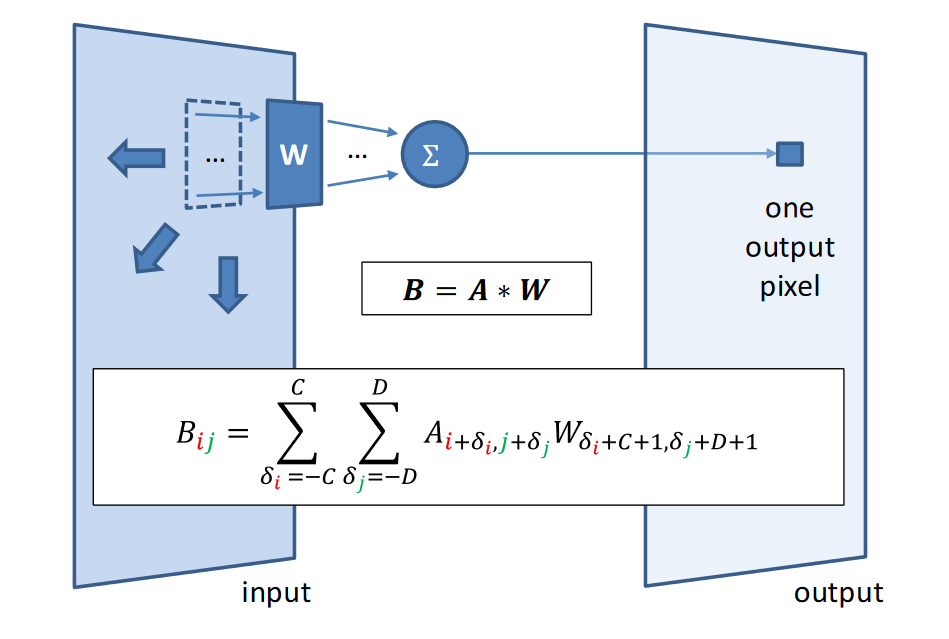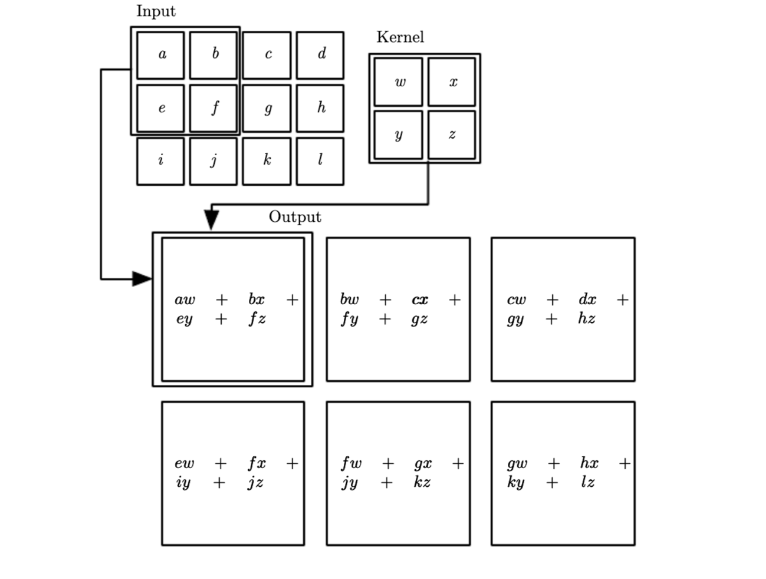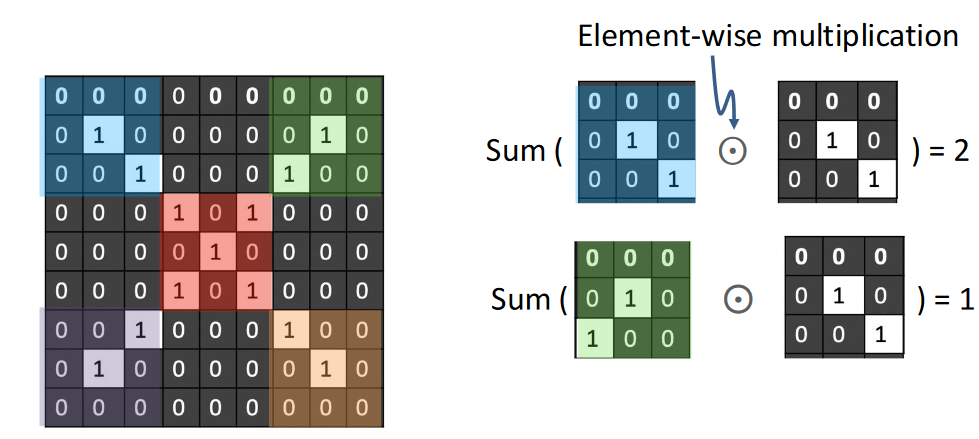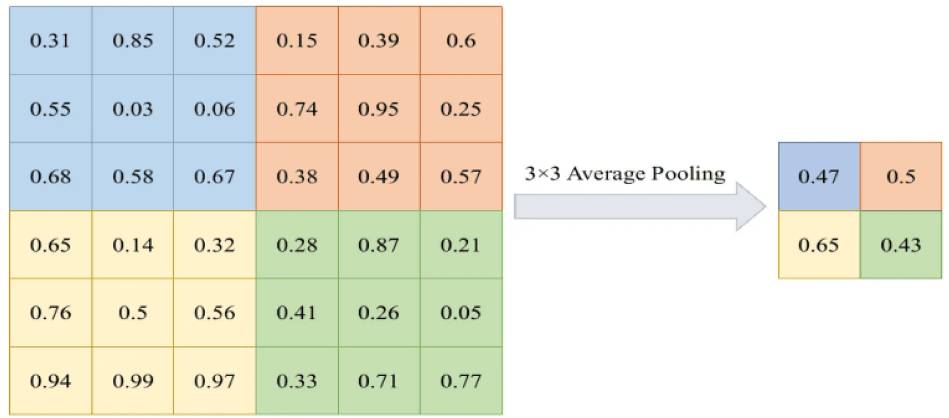Precepction and Artificial Neural Network
Convolutional Neural Network
Convolution Measures how the shape of one function matches the other as it slides along.
Convolution on 2D images

Using filter to perform element-wize multiplication

Convolution filters (aka kernels)
Filters/kernels can identify different patterns

- When input and kernel have the same patern: high activation response
2D example Response map: 2D map of the presence of a pattern at different locations in an input
Convolution parameters
Key hyperparameters in convolution
- Kernel size: size of the patches
- Number of filters: depth(channel) of the input
- Stride: how far to "slide" pacth across input
- Padding of input boundaries with zeros
parameter calculation:
Convolution layer:
Output:
Maxpooling layer: Because the maxpooling extract the feature using functions like , it does not have parameters
Output:
Components of a CNN
Convolutional layers
- Complex input representations based on convolution operation
- Filter weights are learned from training data
Downsampling, usually via Max Pooling
- Re-scales to smaller resolution, limits parameter explosion
Fully connected parts and output layer
- Merges representations together
Downsampling via max pooling (re)
Max pooling helps reduce the spatial dimensions (height and width) of the feature maps while keeping the most important information.
-
Maxpooling takes an patch (window) from the input feature map and selects the maximum value from that patch.

-
Forward pass records maximising element, which is then used in the backward pass during back-propagation
Convolution + Max Pooling Achieves Translation Invariance
If the input image is shifted slightly, the network can still recognize the same feature
Consider shift input image:
- exact same kernels will activate, with same responses
- max-pooling over the kernel outputs gives same output
- size of max-pooling patch limits the extent of invariance
Can include padding around input boundaries
Recurrent Neural Networks, Attention, and the Transformer
Recurrent Netwoks
Recurrent Neural Nets(RNNS) RNN creats networks dynamically, based on input sequence.
- Given sequence of inputs
- Process each symbol from left to right, to form a sequence of hidden state
- Each encodes all inputs up to

Long Short-Term Memory
- LSTM introduces state self-loop, based on copying
- Takes copy of previous state, scales by sigmoid forget gate
- Gradient magnitude now maintained
- Can handle 100+ distance phenimena (vs 5-19 for RNN)
Transformers
RNNs over long sequences not to good at representing proprties of the full sequence
Attention averages over hidden sequence
- Avoids bottleneck, and uncovers meaningful stucture
Self-Atention
- Transformers use attention as means of representing sequences directly, instead of RNN.